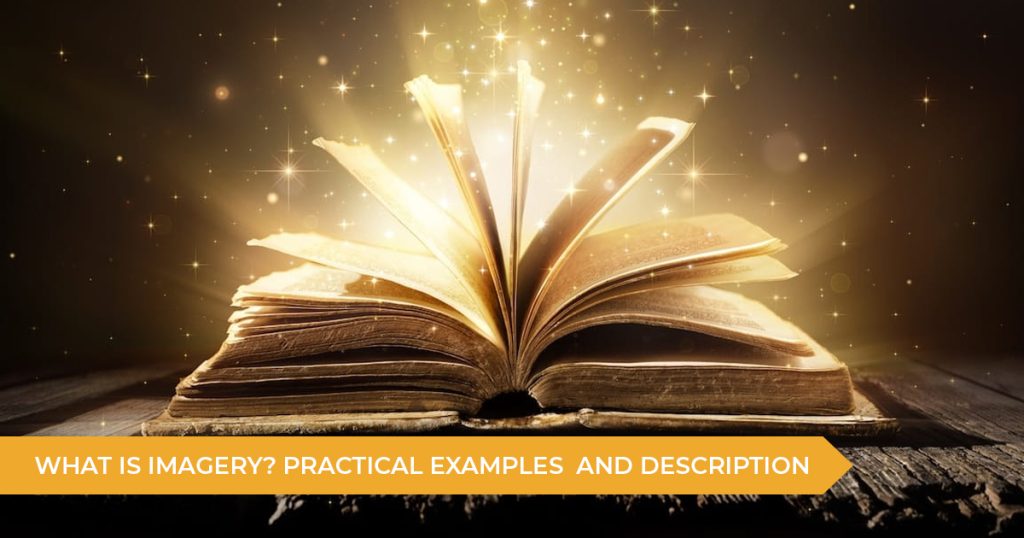Imagery is a language technique where the author uses words and descriptions to convey a sense
When used well, imagery helps us as readers to form a picture of what is happening in the story, and it makes the reading experience more immersive.
First up, let’s take a look at this example, which does not use imagery.
Example 1: I sat on the riverbank and watched the clouds. Everything was peaceful and ordinary.
There’s nothing particularly wrong with this piece of writing, but as a the reader, we don’t really know what the setting looks like or how to visualise this in our heads. Now, let’s consider the same scene, described using various forms of imagery:
Example 2: I sat on the soft grass of the downward-sloping riverbank. Ahead, gentle waves formed on the surface of the dark-green water. I watched as the clouds billowed in clumps above me.
In the second example, it’s much easier to imagine what’s happening and exactly what the scene looks and feels like. We did need to make it little longer, but now we understand what the river and the clouds look like. We can also remove the sentence “everything was peaceful and ordinary” because we’ve conveyed that through the imagery of “gentle waves” and “clouds billowed in clumps” – both these images suggest peacefulness. This is also what we mean when we say show, don’t tell.
There are five main types of imagery, associated with each of our senses. The most common is visual imagery, which appeals to our sense of sight. There is also auditory imagery (sound), tactile imagery (touch), olfactory imagery (smell) and gustatory imagery (taste). By using a combination of these, an author can make the reader feel a variety of sensations as they read the story.
RELATED: Glossary of HSC English Terms
Here are a few examples of imagery mentioned above:
Visual Imagery
The lucid reds and greens of traffic lights reflected in the roadside puddles.
Olfactory Imagery
The aroma of blooming flowers filled the air.
Gustatory Imagery
As the chilli touched my tongue, I thought a fire had been lit in my mouth.
Aural Imagery
As we walked down the forest path, a wolf’s howl pierced the silence.
Visual Imagery
The crowd rose and fell like a field of clovers in the breeze.
Tactile Imagery
The woollen jumper was warm, like a hug from a loved one.
Aural Imagery
The car roared to life.
Excel in English this year with the help of Talent 100. Learn more about our English Year 7 – 12 course structure, 1-1 tutorials, weekly writing tasks and how we can take your marks to the next level with face-to-face and online class options. Click here for more information.




